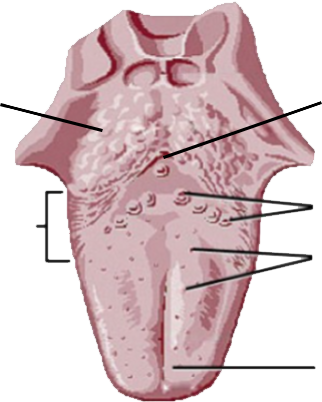Difference between revisions of "AY Honors/Taste/Answer Key/es"
(Created page with "{{clear}}") |
(Created page with "</noinclude> <!-- 3. ¿Qué son las papilas gustativas? -->") |
||
| Line 10: | Line 10: | ||
{{CloseReq}} <!-- 1 --> | {{CloseReq}} <!-- 1 --> | ||
{{ansreq|page={{#titleparts:{{PAGENAME}}|2|1}}|num=2}} | {{ansreq|page={{#titleparts:{{PAGENAME}}|2|1}}|num=2}} | ||
| − | <noinclude> | + | <noinclude></noinclude> |
| − | </noinclude> | + | <!-- 2. Definir la palabra «gusto». --> |
| − | <!-- 2. | ||
| − | |||
| − | |||
<noinclude></noinclude> | <noinclude></noinclude> | ||
{{CloseReq}} <!-- 2 --> | {{CloseReq}} <!-- 2 --> | ||
{{ansreq|page={{#titleparts:{{PAGENAME}}|2|1}}|num=3}} | {{ansreq|page={{#titleparts:{{PAGENAME}}|2|1}}|num=3}} | ||
| − | <noinclude> | + | <noinclude></noinclude> |
| − | </noinclude> | + | <!-- 3. ¿Qué son las papilas gustativas? --> |
| − | <!-- 3. | ||
| − | |||
| − | |||
{{clear}} | {{clear}} | ||
| Line 48: | Line 42: | ||
{{clear}} | {{clear}} | ||
| − | + | {{clear}} | |
| − | |||
| − | |||
<noinclude></noinclude> | <noinclude></noinclude> | ||
| Line 60: | Line 52: | ||
</div> | </div> | ||
| − | + | {{clear}} | |
| − | |||
| − | |||
| − | |||
| − | |||
| − | |||
<noinclude></noinclude> | <noinclude></noinclude> | ||
| Line 76: | Line 63: | ||
</div> | </div> | ||
| − | + | {{clear}} | |
| − | |||
| − | |||
<noinclude></noinclude> | <noinclude></noinclude> | ||
| Line 104: | Line 89: | ||
</div> | </div> | ||
| − | + | {{clear}} | |
| − | |||
| − | |||
| − | |||
| − | |||
| − | |||
| − | + | {{clear}} | |
| − | |||
| − | |||
| − | + | {{clear}} | |
| − | |||
| − | |||
<noinclude></noinclude> | <noinclude></noinclude> | ||
| Line 141: | Line 117: | ||
</div> | </div> | ||
| − | + | MÉTODO: La forma más sencilla de hacerlo es con un padre, tutor o amigo. Pídale que le venda los ojos antes de preparar los artículos para la degustación para asegurarse de que no tiene idea de qué son. De los alimentos que pruebe, al menos 2 deben ser de cada categoría de sensación de sabor. Pruebe cada artículo individualmente. Asegúrese de que su padre, tutor o amigo tome notas basándose en las preguntas a continuación para cada alimento que pruebe. Para cada elemento tienes 3 intentos de adivinar. | |
| − | |||
| − | |||
| − | |||
<noinclude></noinclude> | <noinclude></noinclude> | ||
| Line 151: | Line 124: | ||
==Referencias== | ==Referencias== | ||
| − | + | * [https://youth.adventistchurch.org.uk/e-club-taste-honour Especialidad de Tacto en la Unión Británica] | |
| − | * [https://youth.adventistchurch.org.uk/e-club- | + | * [https://pfclub.co.uk/ Tienda de Conquistadores de la Unión Británica] |
| − | * [https://pfclub.co.uk/ | ||
| − | |||
[[Category:Adventist Youth Honors Answer Book/es]] | [[Category:Adventist Youth Honors Answer Book/es]] | ||
Revision as of 16:22, 23 July 2021
1
2
3
4
Sweet, Sour, Bitter, Salty, Umami (savory)
6
The sense of smell and taste are very closely related because they use the same types of receptors. If someone doesn't have a sense of smell, it will dull their ability to taste well. Science says that the receptors assist each other, and the smell of the food you are eating enhances the taste your taste buds are receiving. When the smell receptors don't work, then less information makes it to the brain to be interpreted as taste.
7
Scientists feel that at least half of food preference is genetic. Those preferences being genetic often demonstrate themselves in preferences to try or not try new foods. However, training affects what tastes we will learn to accept as part of our culture, ethnic origins, nutritional choices, or religious health habits. The Bible makes its calls to healthy living because God made us and knows that we can train our taste buds!
8
Many conditions can affect a person's sense of taste:
- the common cold
- flu
- sinus infections
- throat infections such as STREP throat or pharyngitis
- salivary gland infections
- COVID-19
9
- Psalm 34:8 - taste and see that the Lord is good.
- Psalm 119:103
- Proverbs 27:7
- Exodus 16:31 (Numbers 11:7-8) - the taste of manna
- Genesis 27:24 - Jacob serves soup to Esau
- John 2:9 - Story of Jesus turning the water to wine
10
MÉTODO: La forma más sencilla de hacerlo es con un padre, tutor o amigo. Pídale que le venda los ojos antes de preparar los artículos para la degustación para asegurarse de que no tiene idea de qué son. De los alimentos que pruebe, al menos 2 deben ser de cada categoría de sensación de sabor. Pruebe cada artículo individualmente. Asegúrese de que su padre, tutor o amigo tome notas basándose en las preguntas a continuación para cada alimento que pruebe. Para cada elemento tienes 3 intentos de adivinar.
Referencias




